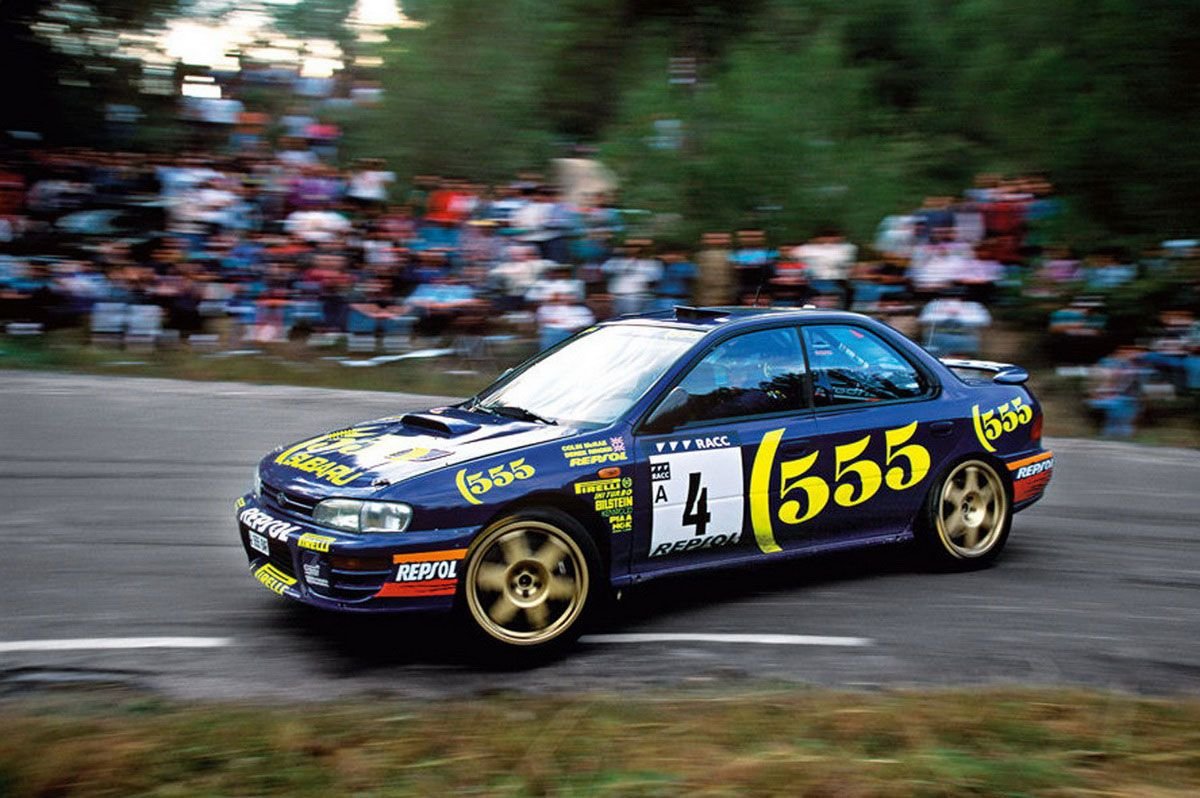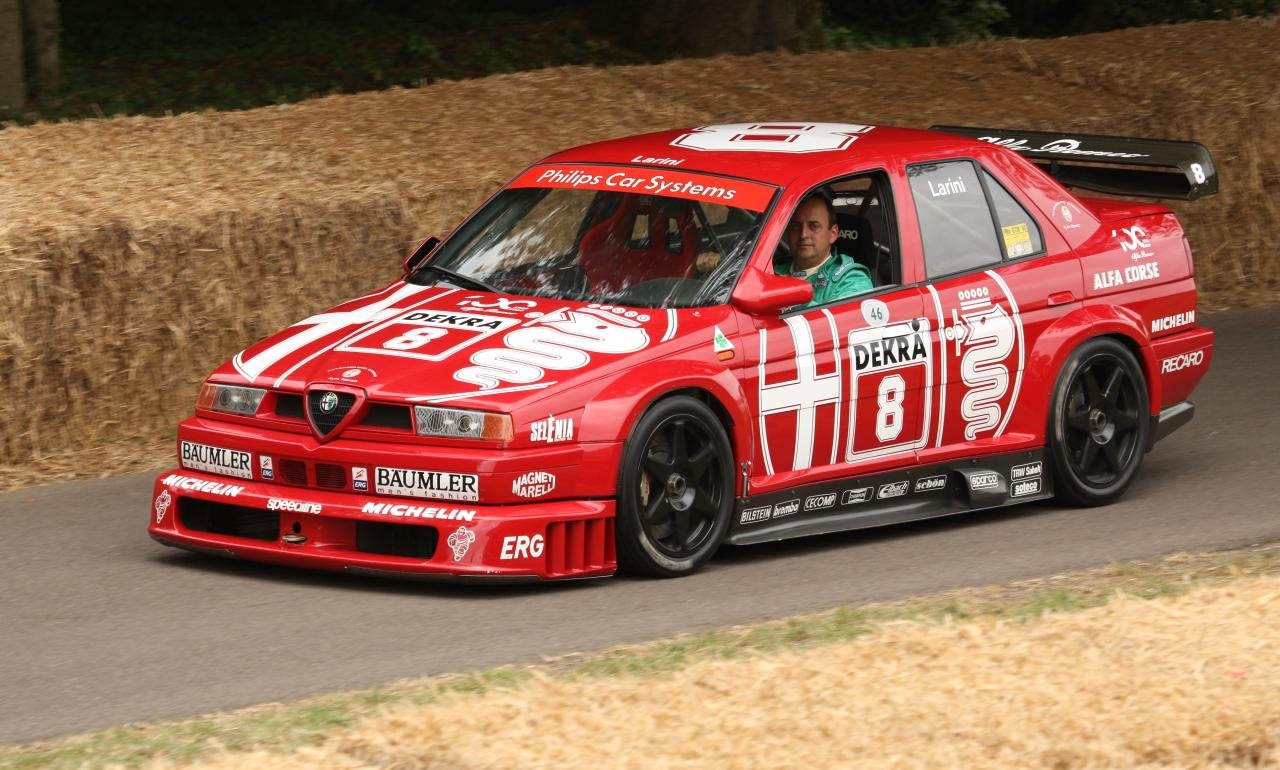Our Favourite Motorsport Liveries of All Time
If there’s one thing that gives a car character, it’s the looks. We find this especially in motorsport, where liveries are a core part of how cars are remembered and become etched into our memories.
We’ve seen some legendary and iconic liveries hit the track over the years, across several categories, so we thought it would be a nice idea to take a look at some of our personal favourites from the annals of time in motorsport. These are in no particular order, just a collection of our favourites!
555 Subaru Impreza
With legendary World Rally Championship driver Colin McRae at the reins, the Subaru Impreza with British cigarette brand 555 styling took the fearless Scot to championship victory in 1995 and looked bloody cool while doing it too. The mighty 325bhp turbocharged flat-four engine-powered machine not only won the championship in McRae’s hands that year, appearing in the top three at five of the eight stages that year and winning two, but also won over the affections of fans the world over.
The sight of that beautiful and striking blue and yellow Impreza being flung over jumps and slid around corners at mind-bending speeds was simultaneously terrifying and exhilarating, made all the more so especially considering the fact that you always knew who was driving it - Colin.
McLaren MP4/23
Our first Formula One entry here, and arguably one of the most stunning and recognisable of the last twenty years. Famous for being the 810bhp, silver and red-liveried monster that brought Lewis Hamilton his first world title of many, the McLaren MP4/23 certainly made an impression on the motorsport world back in 2008.
This car was the third McLaren of its kind to feature this eye candy of a livery, however we’ve gone with this specific rendition for the reason that the aerodynamics from this year of Formula One made the cars look like alien spacecraft, which is how it should always be!
The combination of the classic McLaren chrome silver and the accents of title sponsor Vodafone red really made this machine more of a piece of art than a race car and has often been called the most beautiful livery of the 21st century - and it’s hard to disagree.
Alfa Romeo 155 V6 TI DTM
Born from its production-spec 2.5 litre V6 cousin, Alfa Romeo’s 155 V6 TI partook in the 1993 DTM season and won 12 of 20 races in dominant fashion, piloted by ex-F1 podium sitter Nicola Larini. This homologation of DTM cars ran from 1993 to 1996 - this first version featured a suped-up production 155 2.5 litre naturally aspirated V6 engine, producing an admirable 420 hp at 11,800 rpm, coupled with a four wheel drive system. Pair all this with a 6-speed fully manual gearbox and you’ve got a serious piece of kit on your hands!
The Italian manufacturer’s decision to implement 4WD turned out to be an excellent one, as the car’s dominance was immediately displayed at a rain-soaked first round of the season at Zolder. The car didn’t just look good in Alfa’s signature red, but it sounded fantastic too, with that high-pitched screech that we love from Italian V6 engines.
We included this livery because of just how much it stood out from the rest of its competitors in DTM and its boxy yet aggressive looks.
Jaguar R3
Although not as successful as the team would’ve liked, the 2002 Jaguar R3 was a real looker, featuring the manufacturer’s logo on the engine cover and a lovely velvety British racing green, supplemented by white and red accents and HSBC as the title sponsor. This specific car was the team’s third crack at it after Jaguar’s parent company Ford bought out the Stewart Grand Prix team in late 1999.
Featuring an 805 hp, 3-litre V10, this car sure sounded fantastic and had all the financial backing with Ford pulling the strings, however logistical issues such as headquarters and development being situated half the world apart and also some wind tunnel mishaps both meant (among other factors) that the Jaguar name wasn’t long for the F1 world and didn’t perform all too well, barring two P3 finishes over its five year tenure on the grid.
The most well-known case of Jaguar F1 Team’s mismanagement is one in which a Ford board meeting took place and, upon reviewing a list of payroll salaries in order to cut back funds, chairman William Clay Ford exclaimed “Who the hell is this Edmund Irvine we’re paying 12 million dollars to?”, unbeknownst of course to the fact that Eddie was their top driver at the time.
AEG Olympia Sauber C9
This one’s a bit of an oddball choice - some may prefer the more famous original silver Sauber C9, but we’ve gone for the lesser-known ‘AEG Olympia’ version here. The circuit board feel to its looks highlight the sheer amount of technology packed into this car, highly advanced suspension and Colin Champan-esque ground effect design.
This monstrous Group C machine featured a thirsty twin-turbo 5-litre V8, kicking out up to 820 hp in qualifying trim and 5-speed manual transmission to go with it. It first featured in the 1989 World Sportscar Championship (what we now know as WEC), driven by Mauro Baldi, Jean-Louis Schlesser, Kenny Acheson and Jochen Mass. These four went on to lead the team to an astonishing 7 victories in 8 races that year and locking out the top 4 in the drivers’ championship table.
This car also was one of the reasons why there are two chicanes on the Mulsanne straight at the Le Mans circuit - it reached a blistering top speed of 248mph (400km/h) during qualifying for the event in 1989. Its successor, the 1990 Mercedes-Benz C11, saw the same 7 of 8 victories in its debut season.
Fun fact: Sauber and Mercedes skipped from C9 to C11 due to the difficulty of saying ‘C10’ in German.
Porsche 917 ‘Pink Pig’
It’s pink, has a tail and even a snout. That’s pretty much all the similarities this car shares with a pig. The Porsche 917/20 ‘Pink Pig’ made headlines at the 1971 24 Hours of Le Mans when the designer Anatole Lapine thought it might be a great idea to paint the entire car pink and even label the car’s body panels after the corresponding butcher-style cuts.
The 917 was very quick in the race but retired right at the end of it after running fifth for most of the race. Other names for this particular Porsche include ‘Big Bertha’ and ‘Truffle Hunter’.
To celebrate its 70th anniversary, Porsche paid tribute to the ‘Pink Pig’, running the #92 car in the iconic colour for the 2018 24 Hours of Le Mans.
Castrol TOM’s Toyota Supra
Making its debut in the 1995 All-Japan Grand Touring Car Championship (JGTC), this colourful Supra remains one of the most memorable liveries in GT racing history.
In the second season of the JGTC, Toyota had its sights firmly set on the championship, having lost out to rivals Nissan, who won the inaugural season in 1994 thanks to the might of the Skyline GT-R.
The team ran the livery all the way up until 2001, after countless wheel-to-wheel battles with McLarens and GT-Rs. The livery continued in the GT500 series and has cemented itself as a legend in Toyota’s racing legacy.
Jordan 191 7-UP
Jordan’s debut season in Formula One was a sensational one. It gave Andrea de Ceasaris an opportunity to nab a victory off Ayrton Senna. It also was the car that helped launch the star-studded career of Micheal Schumacher at the 1991 Belgian Grand Prix.
Led by F1 supremo Eddie Jordan, the Jordan team went for a striking green for the 191 thanks to a collaboration with 7-UP. The Fujifilm sponsor on the rear wing makes the 191 a firm favourite for one of the best modern Formula One liveries.
The Jordan team may have been sold to Midland F1 in 2006, but the team soon transformed into Spyker, Force India, Racing Point, and now Aston Martin. The emerald green still lives on to this very day on the Aston Martin AMR24, piloted by Lance Stroll and Fernando Alonso.
Martini Lancia 037
Martini has supplied the racing world with several iconic liveries. From the Brabham BT44B to the Porsche 936, Martini’s signature stripes are instantly recognisable to all motorsport fans, both old and new.
One Martini livery that arguably stands out from the rest is the Lancia 037 Rally. Making its debut in the 1982 World Rally Championship, the car was piloted by legendary rally drivers Walter Röhrl and Markku Alén. The car won the 1983 World Rally Championship Constructors title and narrowly missed out to Hannu Mikkola and his Audi Quattro for the drivers' championship.
Displayed on Formula One cars to powerboats, the Martini colours will forever remain one of the most adored sponsors in motorsport history.
F1 x Marlboro
You didn’t think we could mention iconic liveries without including Marlboro? Undoubtedly the most universally loved livery in motorsport history, the simple colours of Marlboro have been on some of Formula One’s most successful cars. It first featured on the 1972 BRM (British Racing Motors) P160 and P180 and later started appearing on motorsport giants including McLaren and Ferrari.
The Marlboro livery best reflects McLaren’s most successful years, having been displayed on James Hunt’s championship-winning McLaren M23D, Niki Lauda’s MP4/2, and Ayrton Senna’s MP4/4.
Marlboro became the title sponsor of Scuderia Ferrari in the 1990s when it ended its partnership with McLaren. It has since been on all of the cars that have taken Michael Schumacher to his five successive championships, also featuring front and centre on the Ferrari race suits.
Marlboro’s last dance in Formula One was in 2006 when tobacco sponsorship was banned by the FIA at the end of 2006. Philip Morris, the company behind Marlboro, continued to sponsor Ferrari through some residual trackside advertising. The Marlboro branding was reduced to a cryptic barcode symbol, which Ferrari used as a workaround to the advertising limitations.
Whilst the partnership officially ended in 2018 after Mission Winnow started a collaboration with Ferrari, the Marlboro colours will forever be ingrained in the minds of Formula One fans.











